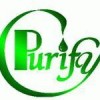Business Type:Manufacturer
Country/Region:China
Ddu Verified
HOT Rank


Chengdu Biopurify Phytochemicals Ltd.
We are professional supplier of 6-Gingerol,Ginsenoside Rg5,Gardenoside,Oleuropein,1,3-Dicaffeoylquinic acid,1,2,3,4,6-Pentagalloylglucose,Ginsenoside Rf,Maslinic acid,Schaftoside.
Business Type:Manufacturer
Country/Region:China
Ddu Verified
HOT Rank

Product name: 8-Gingerol
Synonym name:
Catalogue No.: BP0108
Cas No.: 23513-08-8
Formula: C19H30O4
Mol Weight: 322.445
Botanical Source: ginger (Zingiber officinale)
Physical Description: Powder
Type of Compound: Phenols
Purity: 95%~99%
Analysis Method: HPLC-DAD or/and HPLC-ELSD
Identification Method: Mass, NMR
Packing: Brown vial or HDPE plastic bottle
Storage: Store in a well closed container, protected from air and light. Put into refrigerate or freeze for long term storage.
Whenever possible, you should prepare and use solutions on the same day. However, if you need to make up stock solutions in advance, we recommend that you store the solution as aliquots in tightly sealed vials at -20℃. Generally, these will be useable for up to two weeks.
The product could be supplied from milligrams to grams, up to kilograms
Inquire for bulk scale.
Descriptions:
8-Gingerol is one of the principal components of ginger, which is widely used in China and elsewhere as a food, spice and herb, shows immunosuppressive activity on the immune responses to ovalbumin (OVA) in mice, 8-gingerol suppressed lipopolysaccharide (LPS) and concanavalin A (ConA)-stimulated splenocyte proliferation in vitro. [1]
8-Gingerol suppresses cellular tyrosinase activity and decrease melanin content, inhibits the expression of MC1R, MITF, tyrosinase, TRP1 and TRP2, decreases intracellular RS and ROS levels in B16F10 and B16F1 cells, inhibits melanogenesis by down-regulation of MAPK, PKA signaling pathway; it could be used as an effective skin-whitening agent.[2]
8-Gingerol has inhibition of T lymphocyte proliferation and cytokine synthesis.[3]
8-Gingerol has anti-oxidant and anti-inflammatory activities.[4]
References:
[1] Lu J, Guan S, Shen X, et al. Molecules, 2011, 16(3):2636-45.
[2] Huang H C, Chou Y C, Wu C Y, et al. Biochem Biophyl Res Co, 2013, 438(2):375-81.
[3] Bernard M, Furlong S J, Coombs M R P, et al. Phytother Res, 2015, 29(11):1707–13.
[4] Dugasani S, Pichika M R, Nadarajah V D, et al. J Ethnopharmacol, 2009, 127(2):515-20.
[5] Bensoussan A, Lee S, Khoo C, et al. J Aoac Int, 2007,90(5):1219-26.